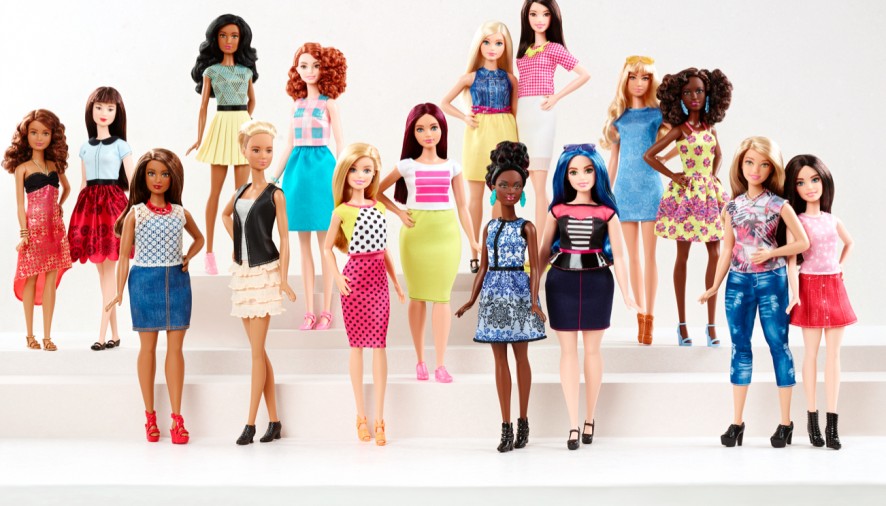After two years of revamping the classic Barbie to meet more realistic body expectations, Mattel have revolutionised an iconic doll which has not drastically changed since its first release in 1959 by releasing ‘curvy’, ‘petite’ and ‘tall’ versions, as well as dolls with different skin tones and hairstyles. Many believe that the decision is a publicity stunt, with a plummet in sales in recent years appearing to play a part in the decision, but it can’t be overlooked that this is a positive step forwards.
It’s easy to dismiss how early children’s perceptions form, but I’m always amazed when I spend time with my young cousins by how much they already know about body shape, and how one should seemingly look, as well as the importance of ‘looking good’. If one was to scale up the measurements and proportions of the classic Barbie and apply them to a living female, she would have to walk on all fours, and would be unable to lift her head, demonstrating just how unrealistic the figure that we’ve all known for years is. In addition, the clothing options have moved away from what some argue to be objectifying clothing.
All in all, it appears a celebration of the diversity of body shapes and sizes, however I can’t help but notice one thing – what about Ken? Despite the dramatic make over, or rather make under, of female Barbie dolls, poor old Ken remains the same right down to his chiselled abs. This is potentially due to the fact that, whilst Ken’s proportions are unrealistic, they are at the very least theoretically possible. But whilst Barbie is still primarily marketed almost exclusively to girls, it seems odd that Mattel have not been more enthusiastic to adapt the male version of the doll at a time when they claim to have been taking steps to combat the idea of ‘gendered toys’.
In our heavily documented, social media obsessed age, with 400 million of us signed up to Instagram at the end of last year, men are experiencing body image concerns just as much, if not more, than women. Last year, according to the recent Channel 4 documentary Obsessed with My Body, which explored the huge growth in teenage male vanity, males took more ‘selfies’ than women. With such easy access to ‘role models’ on the internet, we are bombarded with unrealistic body expectations at all hours of the day, with many going to extreme lengths to achieve a certain look. Men are feeling the pressure just as much, and more needs to be done at a younger age to combat the negative connotations with certain body sizes and shapes. Body perception is not something that we are born with, but rather something that environment teaches us, so a full effort needs to be made to tackle this.
Personally, the achievement here is not that there is a ‘curvy’ (actual human sized) Barbie, although it is a positive step to be marketing more realistic body shapes, sizes and designs. For now, it is important that the discussion has been opened and the need for change recognised. But the true achievement will be when the discussion is no longer about our bodies.
Helen Brealey
Image: AFP

